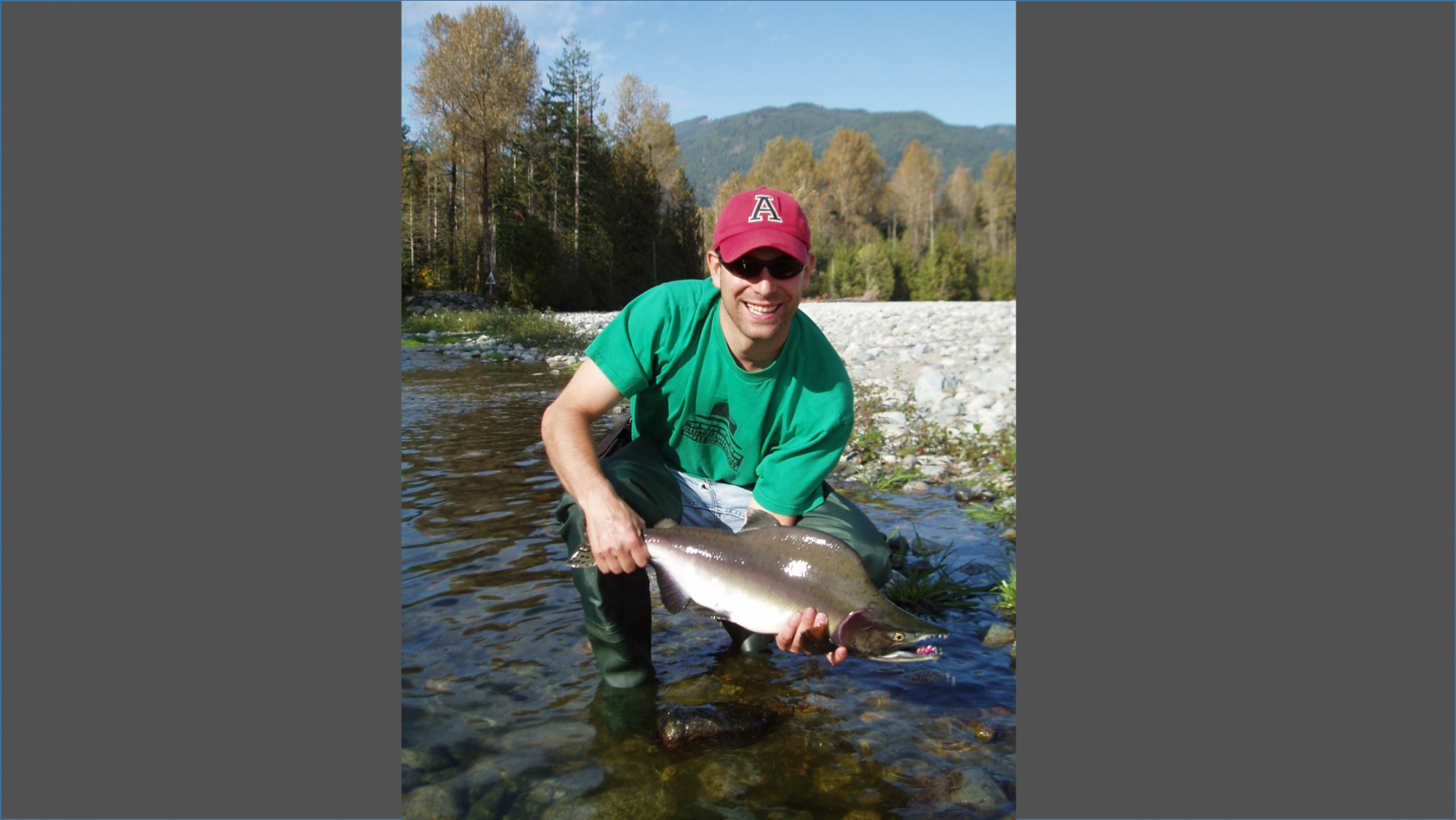Simple fish hook change creates career highlight, real conservation impact

URBANA, Ill. – Many young environmental scientists and wildlife biologists go into their fields with a fundamental urge to save the planet, to protect the aspects of nature that most inspire their passion and awe. But, considering the incremental nature of science, it’s relatively rare for an environmental study to translate directly into a positive conservation outcome.
This time, it did.
Cory Suski, a professor in the Department of Natural Resources and Environmental Sciences (NRES) at the University of Illinois, fell in love with fish as a young boy in Canada, spending long days on the water with his dad, fishing in remote spots throughout Ontario. He ended up with a curiosity about life underwater and a mission to conserve the animals at the center of his favorite pastime.
He landed on ecological physiology – figuring out how the environment affects internal systems in fish – but he and his students have tackled a whole range of topics, including fish behavior when an angler drops a hook, innovative ways to keep invasive Asian carp out of the Great Lakes, and making sure restored habitats will be suitable for the fish they’re trying to bring back.
But one of Suski’s biggest impacts to date wasn’t even research in the traditional, experimental sense. Back in 2004, he and fellow postdoc Steven Cooke, NRES-grad-turned-professor at Ontario’s Carleton University, published a review article synthesizing the available science on a type of fish hook known as a circle hook.
Unlike traditional J-shaped fishing hooks, the tip of a circle hook points inward, making it resemble a circle. Anglers reel in their catch in a slightly different way, but otherwise, they catch just as many fish with circle hooks. Their rounded design means circle hooks almost always hook fish in the corner of their mouths, rather than in gills, eyes, or down into the fish’s stomach, which happens on occasion with J-hooks. In other words, circle hooks are far easier on fish. And for catch-and-release fishing and for fish conservation in general, that’s a big deal.
“If the fish is doing its thing and you catch it, reel it in, take a picture of it, and put it back in the water, it’s like it just went for an intense run; it'll be fine. If you look at all the variables you can measure, it’s basically 100% back to normal within two hours from a physiological perspective,” he says.
“But the problem comes in with the cumulative impacts of multiple sub-lethal stressors. If you catch a fish when it's too hot, keep the fish out of the water for too long taking pictures, or if it starts to lose blood from being hooked in the wrong spot, it becomes a death by a thousand cuts. One of the problem areas is getting the hook out. When you're holding a fish out of the water and horsing around with pliers trying to dislodge the hook, you're removing the fish's protective slime coat, and potentially doing tissue damage. With a circle hook, you just sort of go ‘pink!’ and it falls out, and the fish swims away. It makes things a lot cleaner and a lot simpler.”
Before Suski and Cooke published their article, the conservation value of circle hooks was mostly assumed, not proven.
“At the time, there was this noise in the scientific community about circle hooks and conflicting studies. Were they working, were they not working? Did people like them? So we went through the literature and asked if these things actually work across the available evidence. The punchline to the whole paper was, yeah, circle hooks actually have a conservation benefit. And all from this teeny little change in shape,” Suski says.
Seventeen years later, that article has been cited hundreds of times, and has been used as a reference to develop official policy. That’s according to a recent retrospective article by Cooke and Suski documenting the impact of their previous paper. But more importantly, those policies and citations have trickled down to everyday anglers, who are now more likely to pick up a circle hook for catch-and-release fishing than other types of hooks.
“People choose circle hooks because it's the right thing to do, doesn't really cost them anything, and there's no real downside. The vast majority of anglers want to do the right thing, to make things better,” Suski says. “So if you offer them something they could do that actually makes a difference, they’re going to do it.”
Cooke says the small ask is often key in changing behaviors around conservation.
“Sometimes to achieve a certain conservation outcome, we need to make big changes, like closing off access to protected areas. Then people get upset and it becomes this big contentious issue,” he says. “Circle hooks are not a big shift. The angler won’t notice the difference, but the fish will. All it took was pulling the literature together to demonstrate the conservation benefit and make anglers shift their behavior.”
Although he has done a lot of meaningful work in the 17 years since the article first appeared, the circle hook article has been a highlight of Suski’s career.
“That's the goal with conservation research: to change people's behavior. So, it’s nice to see that our work made a difference. Hopefully it means there are more fish out there and the fish are happier,” he says.
Suski and his faculty colleagues in NRES may not change entire industries with every paper they publish, but their research is designed to attack real conservation issues head-on, seeking new and sustainable ways to solve intractable environmental and socio-environmental problems. Learn more about choosing an environmental science degree through NRES.
Suski and Cooke’s retrospective article, “Reflections on the influence of a synthesis of circle-hook evidence on the angling community and conservation policy and practice,” is published in Aquatic Conservation: Marine and Freshwater Ecosystems [DOI: 10.1002/aqc.3318].